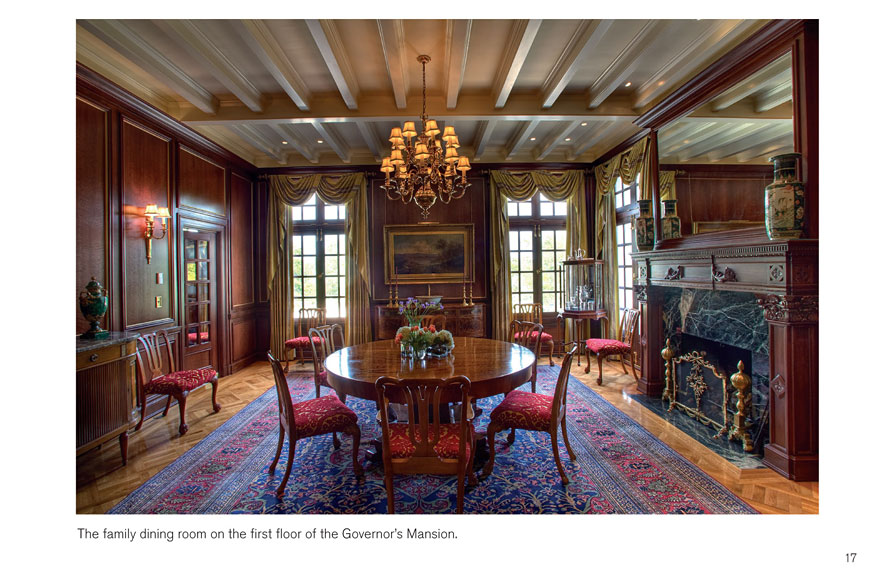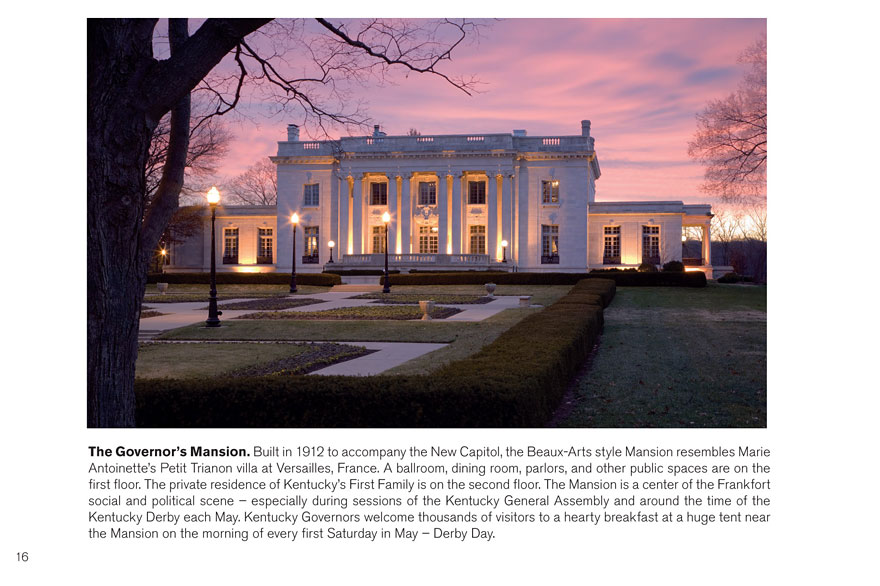
Introduction
Although confronted with the same challenges as other American towns in the 21st century, Frankfort clings to its colorful history and the buildings and scenes that remind us of the town’s past. At the same time both a small town and a state capital, Frankfort‘s story is extraordinary.
Frankfort’s founder was General James Wilkinson — a Revolutionary War officer who saw the potential of this little riverside plain as a location for a trading community. He laid out the town’s first streets and opened a trade route that connected Frankfort and central Kentucky with the port of New Orleans by way of the Kentucky, Ohio, and Mississippi Rivers. Wilkinson, who had a reputation for slick, underhanded deals that gained him the nickname “Silky Wilky,” did not remain here long — just as well, since his eastern seaboard aristocratic wife was said to have loathed the place. The origin of the town’s name is not certain. One camp holds that it was originally called Frank’s Ford for an early pioneer killed by the Indians at a nearby Kentucky River crossing and that the name evolved over the next few years into Frankfort. Others insist that it was named by German settlers in honor of the similarly named city in their homeland.
After its establishment in 1786, the single most important event in the history of Frankfort was its selection as the capital city of the Commonwealth of Kentucky. In competition with several other towns for that distinction, the citizens of Frankfort made the state legislature’s capital selection committee a decisively lucrative financial offer — cash, real estate, income from tobacco warehouses, and building materials with which to erect a capitol. Kentucky became a state independent of Virginia in 1792, and Frankfort became the capital that December. Although the town never grew to compete in size with Louisville or Lexington, it did fight off a century of attempts by these and other Kentucky cities to take away Frankfort’s status as the capital and the economic benefits associated with that honor. A passage in Kentucky’s current state constitution and construction of the New Capitol building early in the 20th century finally guaranteed that state government would remain forever in Frankfort.
Two-Page Spread Sample

Other Samples
Frankfort became a prosperous community over the 19th century. The downtown commercial district did well. Residential areas — fashionable in South Frankfort, less so in North Frankfort’s Craw neighborhood — grew steadily. Frankfort got its own bridges, railroad station, hotels, theaters, bars, brothels, courthouse, post office, library, and even a college — and state government buildings scattered all over the place. Business slowed a bit during the Civil War, while this divided community that had to govern an equally divided border state sorted out its loyalties.
During the early 20th century, Frankfort grew out of its Kentucky River basin up the hillsides and into the surrounding, rolling Bluegrass fields that had by then been rich farmland for generations. Soon, a downtown that had survived floods, fires, and war was threatened by suburban development, urban sprawl, and urban renewal. During recent decades, many Frankfort citizens have struggled to maintain the historic government structures, the exuberant commercial buildings, the comfortable homes, and the beautiful Kentucky landscape that are Frankfort’s inheritance from its past. We hope that the spectacular photographs in this book do justice to that past and will help guarantee that Frankfort remains the pleasant place to live — and delightful place to visit — that it has been most days since James Wilkinson first laid eyes on the place — Mrs. Wilkinson’s opinion notwithstanding…. –Nicky Hughes



